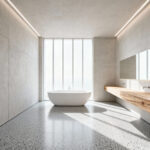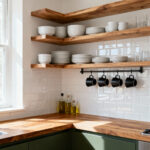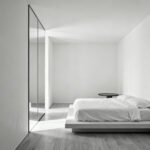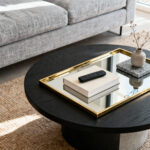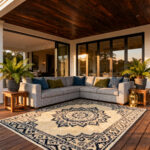Imagine walking into your dream kitchen – a space that instantly puts you at ease inspires your culinary creativity and brings your family together. What is the secret to creating this kind of inviting atmosphere? It all comes down to the colors you choose. As a home decorator and handyman passionate about functional aesthetics, I’m here to share my tips for crafting the perfect color palette for your kitchen.
The kitchen is the heart of the home, a place where we nourish our bodies and souls. But it’s not just about functionality – the colors you select can profoundly impact the overall mood and energy of the space. Whether you’re drawn to warm and cozy hues or prefer the calming influence of cool tones, the right color scheme can transform your kitchen into a true reflection of your style and needs.
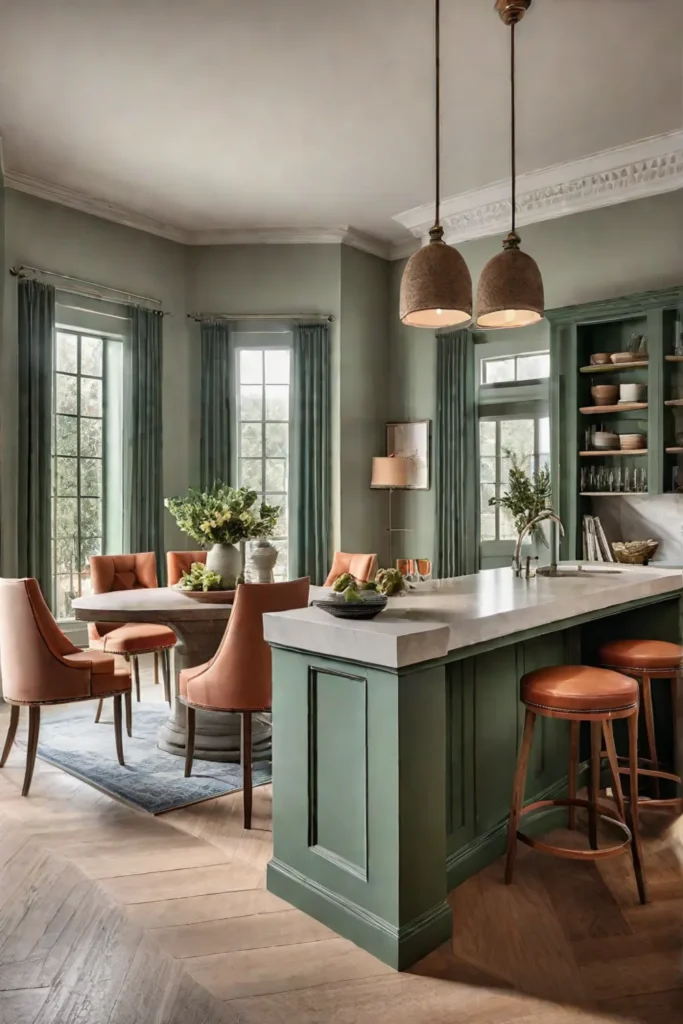
In this comprehensive guide, we’ll explore the power of warm, cool, and neutral colors, the strategic use of bold accents, and the principles of color psychology. By the end, you’ll have the knowledge and inspiration to create a kitchen that looks stunning and supports your culinary creativity and family gatherings. Let’s get started!
Warm Colors in the Kitchen
Warm colors, such as reds, oranges, and yellows, can create a cozy and inviting atmosphere in the kitchen. These vibrant hues can enhance the culinary experience and foster a sense of comfort and energy.
The Psychological Impact of Warm Colors
Warm colors evoke feelings of warmth, comfort, and energy. In the kitchen, these hues can set the tone for a welcoming environment that encourages social interaction and relaxation. They can also stimulate the appetite and enhance food presentation, making them a valuable consideration in kitchen design.

Pairing Warm Tones with Natural Materials
It’s important to balance warm colors with natural materials and textures to create a harmonious and visually appealing design. Wood, stone, and natural fabrics can help soften the vibrancy of warm tones and create a cohesive look.
Balancing Warm Colors with Neutral or Cool Accents
While warm colors can create a cozy atmosphere, they must be balanced with neutral or cool accents to avoid overwhelming the space. White, gray, and black are popular neutral colors that can be used to create contrast and balance warm tones. Cool colors, such as blues and greens, can also be used to create a calming contrast to warm hues.
Warm Colors in Traditional Kitchens
Warm colors like red and orange are commonly used in traditional Italian and Mediterranean kitchen designs to create a warm and inviting atmosphere. These vibrant hues can evoke feelings of comfort and nostalgia, making them a natural choice for those seeking a more classic look.

Warm Colors and Food Presentation
Warm colors in kitchen design can also influence appetite and food presentation. For example, red and orange hues stimulate the appetite, while yellow creates a sense of cheerfulness and optimism, enhancing the overall dining experience.
Cool Colors in the Kitchen
Cool colors, such as blues, greens, and purples, can bring a sense of tranquility and refreshment to the kitchen. These calming hues can create a serene and soothing atmosphere, making them an excellent choice for those seeking a more relaxed and rejuvenating cooking space.
The Calming Effect of Cool Colors
Cool colors have a natural ability to soothe the mind and reduce stress. In the kitchen, these hues can create a sense of relaxation and refreshment, providing a much-needed respite from the hustle and bustle of daily life.
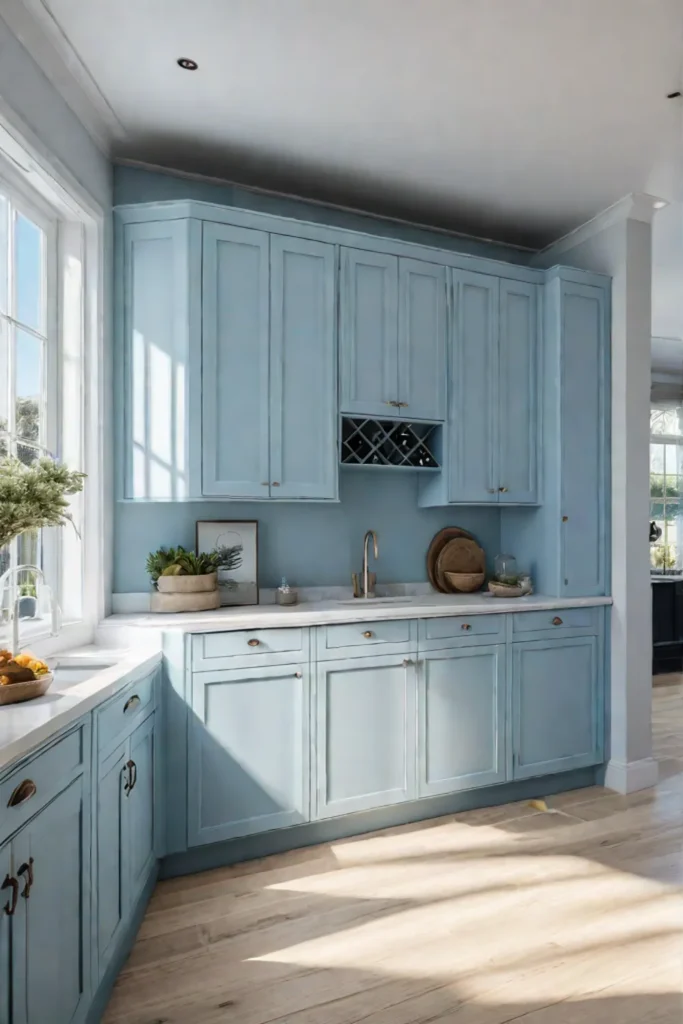
Cool Colors in Scandinavian and Minimalist Designs
Cool colors are particularly popular in Scandinavian and minimalist kitchen designs. These design styles often focus on simplicity and functionality, and cool colors help achieve a clean and uncluttered look while also contributing to a sense of calmness.
Pairing Cool Tones with Modern Materials
Cool colors can be beautifully paired with modern materials and sleek finishes to create a visually appealing and contemporary kitchen design. For example, cool-toned cabinetry made from high-gloss materials can add a touch of sophistication to the space.
Balancing Cool Colors with Warm or Neutral Accents
It’s crucial to balance cool tones with warm or neutral accents to maintain a visually harmonious design. Warm colors, such as reds, oranges, and yellows, can be used as accents to add contrast and depth to the cool color palette. Neutral colors like whites, grays, and beiges can balance the cool tones and create a cohesive look.
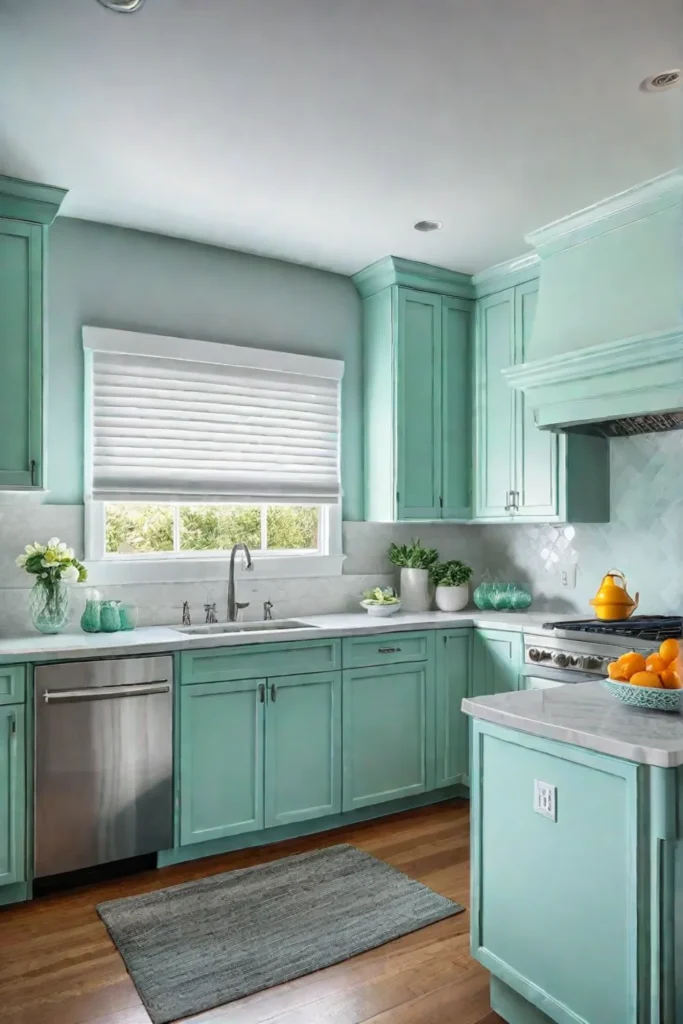
Cool Colors and Perceived Cleanliness
Cool colors can contribute to a perceived sense of cleanliness and organization in the kitchen. A study by the University of California, Berkeley found that people perceive rooms with cool colors as cleaner and more organized than those with warm colors[1]. This can be valuable for those seeking a more streamlined and efficient cooking space.
Neutral Colors in the Kitchen
Neutral colors, such as whites, grays, and beiges, provide a versatile foundation for kitchen design. These timeless hues create a sense of balance and serve as a canvas for showcasing other design elements, making them a popular choice among homeowners and designers alike.
The Enduring Appeal of Neutral Kitchens
Neutral colors have been a staple in kitchen design for centuries, with white being a particularly enduring choice. Their popularity is largely due to their ability to enhance the kitchen’s functionality while adding visual interest and personality.
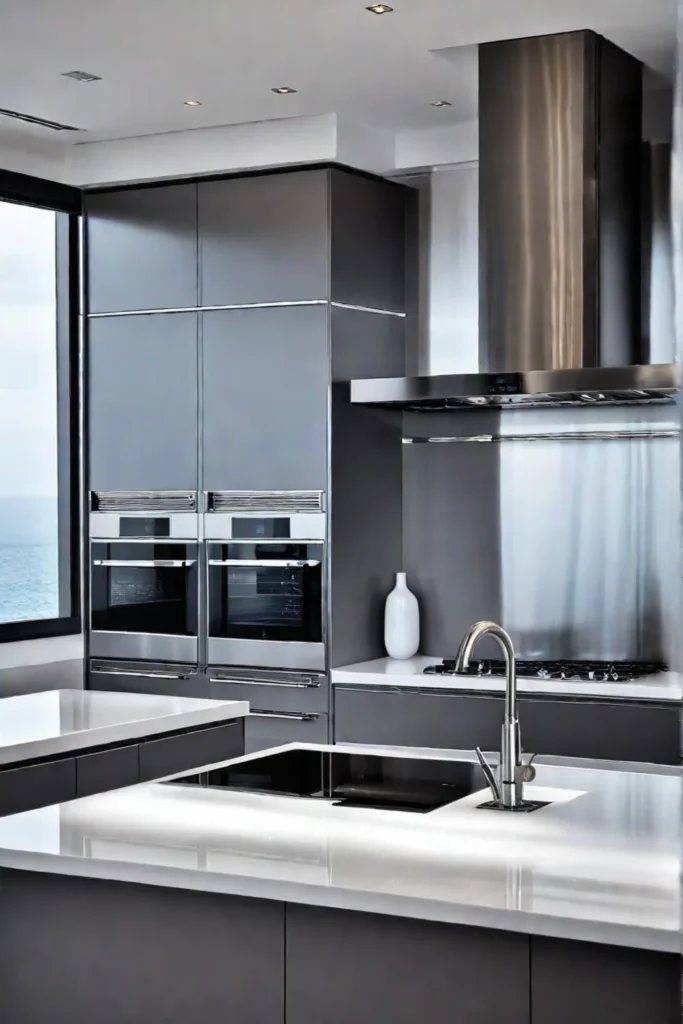
The Psychological Impact of Neutral Colors
Neutral colors have a calming effect on the mind, making them an excellent choice for the kitchen. They create a sense of harmony and balance, essential for a functional and comfortable cooking space. Additionally, neutral colors can enhance the kitchen’s perceived spaciousness and light reflection, making it feel more open and airy.
Pairing Neutral Tones with Materials and Finishes
Neutral colors can be paired with various materials and finishes to create a visually appealing kitchen design. For example, a white cabinetry backsplash can be paired with a gray countertop and stainless steel appliances for a modern and sleek look. In contrast, beige cabinetry can be paired with a white marble countertop and brass hardware for a more traditional and elegant design.
Enhancing Functionality with Neutral Colors
Neutral colors can also enhance the kitchen’s functionality by creating a clean and uncluttered space. For example, white cabinetry can make it easier to see and access kitchen items, while a gray countertop can hide stains and spills. Additionally, neutral colors can help visually balance a kitchen design, making it easier to navigate and use.

Neutral Colors and Perceived Spaciousness
One key benefit of using neutral colors in the kitchen is their ability to enhance the perceived spaciousness of the room. By reflecting light and creating a sense of openness, neutral tones can make even a small kitchen feel more airy and inviting.
Bold Accents in the Kitchen
While a neutral or harmonious color palette can provide a solid foundation for your kitchen design, incorporating bold accents can add depth, personality, and visual interest to the space. These vibrant design elements can transform a functional kitchen into a true showpiece.
The Psychological Impact of Bold Accents
Bold accents can have a significant psychological impact on kitchen users. They can evoke emotions, stimulate creativity, and even influence the perceived energy of the space. For example, a bright red accent wall can symbolize passion and excitement, while a bold floral pattern can evoke feelings of nature and tranquility.
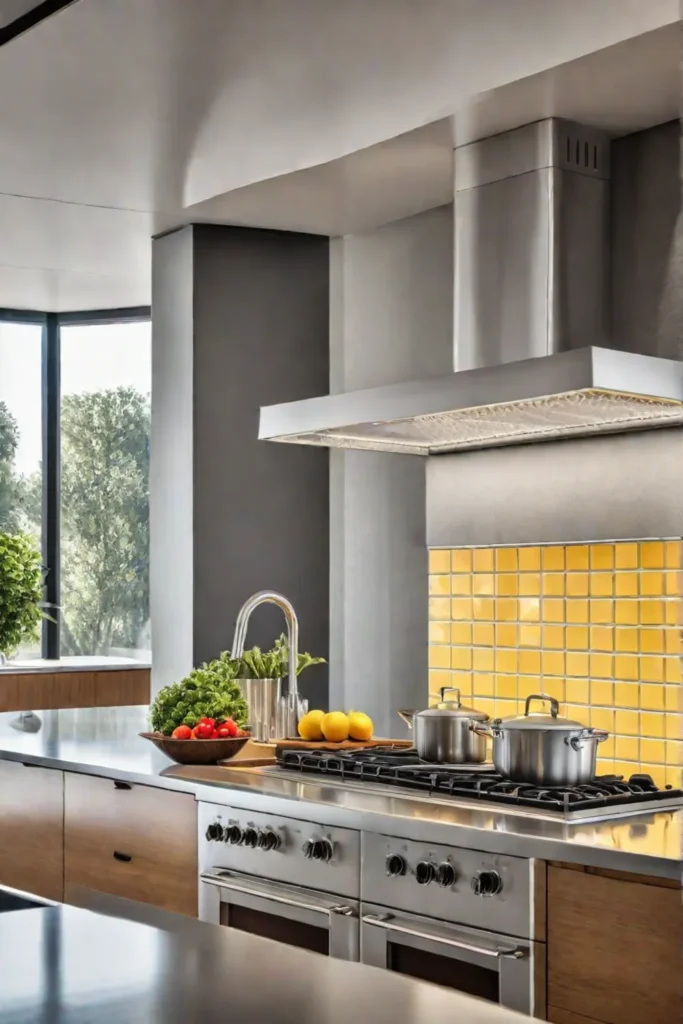
Balancing Bold Accents
Balancing bold accents with a neutral or harmonious color palette is crucial for achieving a visually appealing and cohesive look. This can be achieved by using bold accents to contrast the neutral background or incorporating them into a pattern that includes more subdued colors.
Placement and Scale of Bold Accents
The placement and scale of bold design elements are essential for enhancing the perceived energy and creativity in the kitchen. For example, a bold-colored accent wall can be a striking focal point, while a bold-patterned rug can add visual interest to an open floor plan.
Bold Accents in Traditional and Contemporary Designs
Bold accents have been a staple in traditional kitchen design trends, such as bold-colored cabinetry and backsplashes. However, they are also becoming increasingly popular in contemporary kitchen design, where clean lines and minimalism are often the norm.
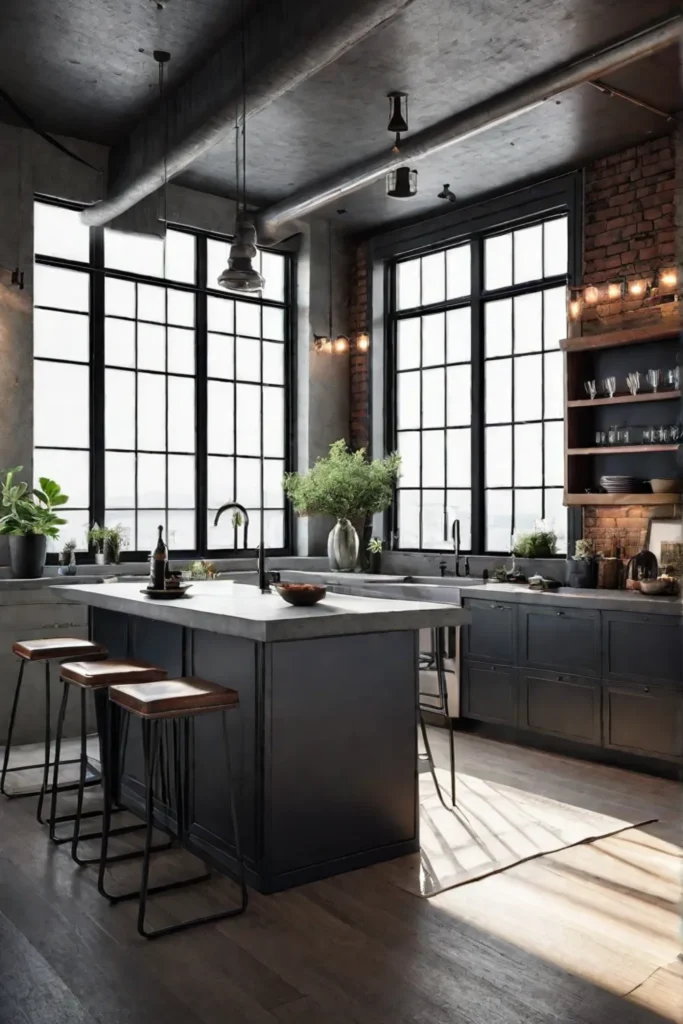
Examples of Bold Accents
Some examples of bold accents that can be incorporated into a kitchen design include:
- Bold-colored cabinetry, such as deep blue or vibrant green
- Bold-patterned kitchen textiles, such as rugs or window treatments
- Striking backsplashes with vibrant colors or bold geometric patterns
By strategically placing and scaling these bold design elements, you can create a visually stunning kitchen that reflects your personal style.
Color Psychology in the Kitchen
The psychology of color plays a significant role in shaping the atmosphere and mood of a kitchen. By understanding the emotional and functional impact of different hues, you can create a space that looks beautiful and supports your culinary creativity and family gatherings.
Appetite and Mood
Certain colors can stimulate appetite and create a positive mood in the kitchen. For example, red is associated with excitement and passion, while yellow is associated with happiness and optimism. These warm, vibrant hues can create an energetic and inviting atmosphere that encourages culinary exploration and social interaction.
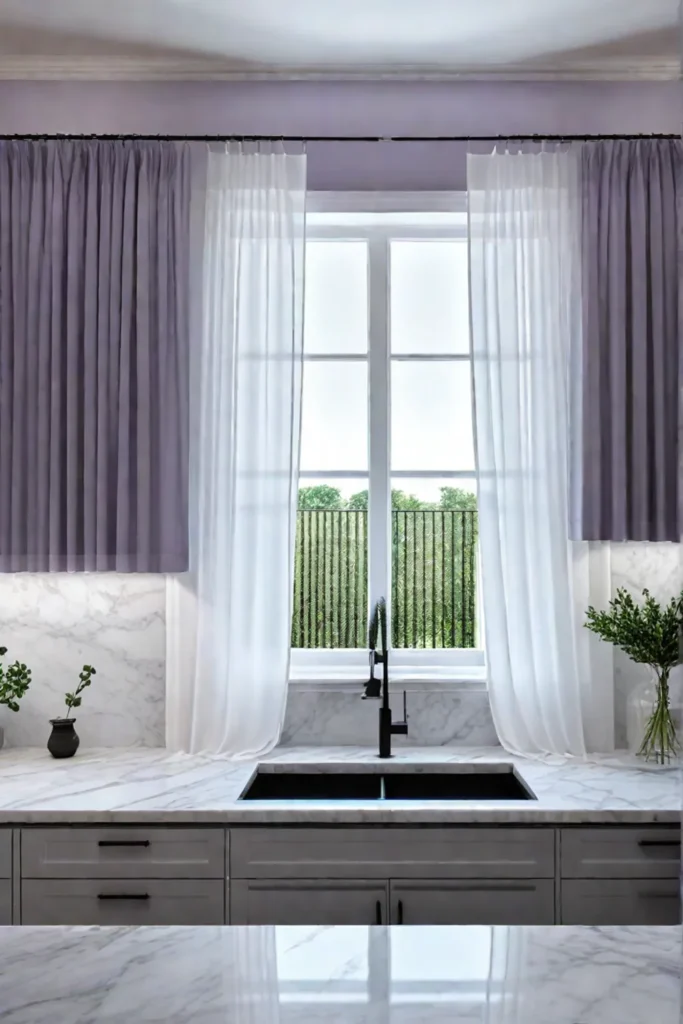
Productivity and Focus
Conversely, cool colors like blue and green can contribute to a sense of calmness and focus, making them ideal for kitchen designs that prioritize efficiency and productivity. Blue, in particular, is known for its ability to promote concentration and reduce stress, making it a great choice for a dedicated cooking space.
Tailoring Color Schemes to User Needs
When selecting a color scheme for your kitchen, it’s important to consider the space’s specific activities and user needs. For example, a kitchen used primarily for entertaining might benefit from a warm and inviting color palette, while a kitchen focused on meal preparation could thrive with a clean and organized color scheme.
Historical and Cultural Associations
Different colors also have historical and cultural associations that can influence their use in kitchen design. Red, for instance, is often linked to Italian cuisine, while blue is commonly associated with French culinary traditions. These color-based cultural references can add depth and authenticity to your kitchen’s aesthetic.

Perceived Warmth, Cleanliness, and Organization
The colors you choose can also impact your kitchen’s perceived warmth, cleanliness, and organization. Warm tones like red and orange create a cozy and inviting atmosphere, while cool colors like blue and green can contribute to a sense of order and tidiness.
By understanding the principles of color psychology and tailoring your kitchen’s color scheme to your specific needs and preferences, you can create a space that looks stunning and supports your culinary journey and family gatherings.
Conclusion
Crafting the perfect color palette for your kitchen is a transformative process that can elevate this essential room’s overall aesthetic, mood, and functionality. By exploring the impact of warm, cool, and neutral hues, the strategic use of bold accents, and the principles of color psychology, you can create a kitchen that truly reflects your personal style and needs.
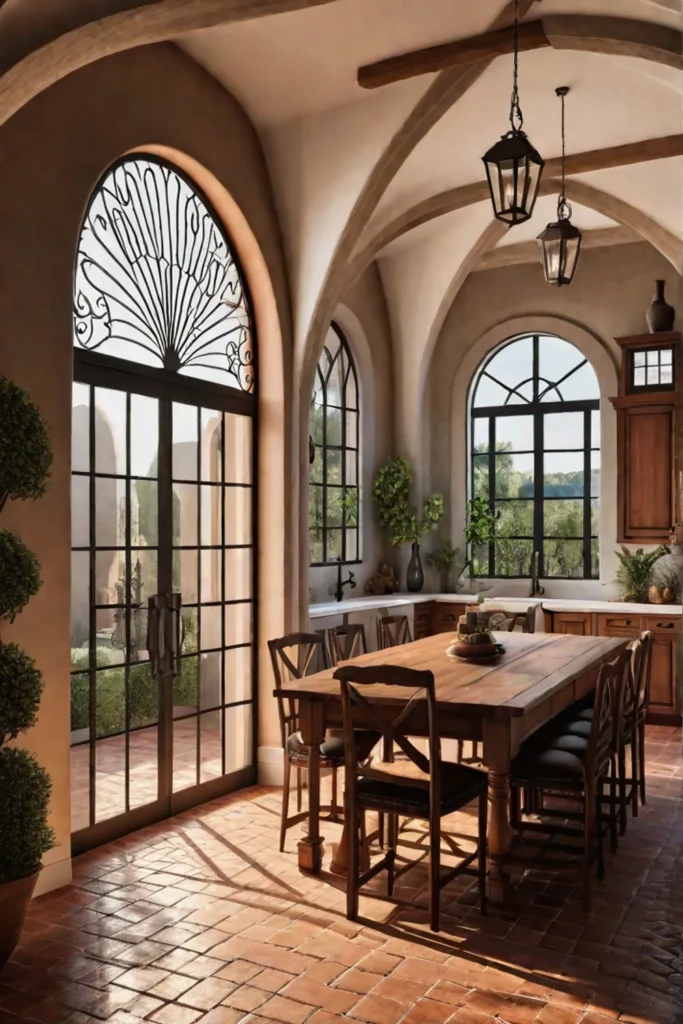
Remember, the kitchen is your culinary canvas, and your chosen colors will be the brushstrokes that bring it to life. Whether you’re drawn to the cozy warmth of reds and oranges, the calming influence of blues and greens, or the timeless elegance of neutral tones, the right color scheme can transform your kitchen into a space that nourishes your body and soul.
So, what are you waiting for? Start exploring the world of kitchen color schemes and unlock the full potential of your culinary canvas. Your dream kitchen is waiting to be discovered!



